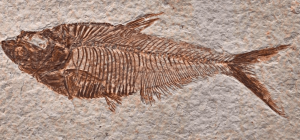What are the Florissant Fossil Beds & National Monument?
The Nature Place, Conference Center & Retreat Venue
The Florissant Fossil Beds are one of Colorado’s best national monuments and geologic attractions in Colorado. With rooted history in the Ute territory and westward migration of the Homestead Act of the early 1860’s, the fossilized redwood forest was the same wondrous attraction as it is today.
Through interactions of native Utes and settlers, the land was viewed as a source of many uses. For the Ute, the land is home. The re-claimed Florissant Valley provided the Ute people a haven of life unparalleled in the mountains. They foraged for plant species, and migrated through the seasons of the hunt. Incoming homesteaders perceived the lush valley as an opportunity to grow the manifest of westward progress.
Gold was discovered on a mining claim in Fairplay, Colorado about 50 miles from present day Florissant. It was this notion that drove settlers through the Florissant Valley to nearby Cripple Creek. Settlers befriended the Ute tribespeople to learn from the land and how to survive in variable and harsh mountain conditions.
It was not until the 1870’s when surveyors and university students traveled on expeditions to explore the recently excavated mining claims to find astoundingly well preserved fossils. They studied the surroundings from natives and homesteaders about the soon to be treasure trove of petrified organisms. After months of excavation students on an expedition from Princeton University documented the discovery of a new species, Trichophanescopei. It is not often in the scope of geologic time that humans discovered such a high quality of life specimen similar to that of preserved organisms at the Florissant Fossil Beds.
surroundings from natives and homesteaders about the soon to be treasure trove of petrified organisms. After months of excavation students on an expedition from Princeton University documented the discovery of a new species, Trichophanescopei. It is not often in the scope of geologic time that humans discovered such a high quality of life specimen similar to that of preserved organisms at the Florissant Fossil Beds.
The variety of geological samples attracted tourists from the growing urban center of Colorado Springs. Travelers at the turn of the 20th century arrived with a spectrum of intention from exploring, to appreciating, to pillaging the fossil site. Stumps of giant redwood trees served as the main draw of crowds to gawk at and chip away a piece of the trees as a souvenir. The practice of destroying the site was not very well expressed or understood at the time. Destruction from visitors of all types would eventually lead to the legal battles stemming from mineral rights, use, conservation, and further stewardship of the area.
Visitors continued to see the value and wonder of the Florissant Valley which enabled them to receive backing from paleontologists and citizens to protect this ‘special spot’ near the Colorado Outdoor Education Center and Sanborn Western Camps. On August 20th, 1969, President Richard Nixon and Congress granted national monument status to the Florissant Fossil Beds, ensuring the study of fossils, climate, and unlocking the mysteries of geology.
A prehistoric place now turned preserved site continues to offer students, campers, groups, and guests the opportunity to better understand the land, creatures, people, and a time that came before them at the Florissant Fossil Beds National Monument.
